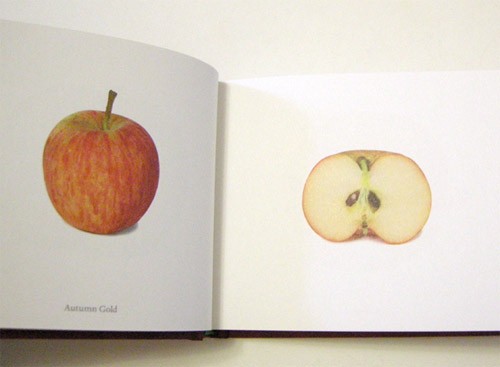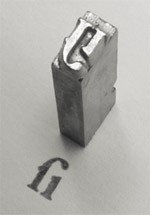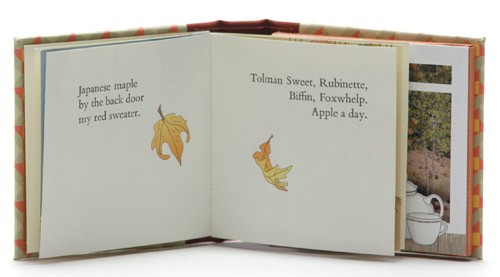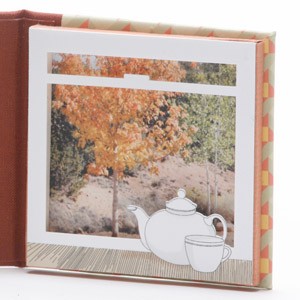
I’m working on another season-themed miniature book to go with Summer in Vermont and Winter’s Song. This one is for autumn and includes a haiku that lists the names of several apple varieties. I showed a model of the book to my friend Cathy and she immediately pulled out a book called Apples I Have Eaten (seen above).
Of the thousands of known apple varieties, only about twenty can be found in grocery stores. Apples I Have Eaten is a tribute to a bushel of the harder-to-find heirloom apple cultivars—including the Goldrush, Burgundy, Prairie Spy, Hidden Rose…. Each apple was locally sourced, lovingly photographed, and then happily eaten by artist and author.
 I’m hand-setting the type for this new book, as I did with Summer in Vermont. When I set that earlier book, I noticed I hadn’t used all the letters of the alphabet, and only one or two ligatures. The apple variety haiku in the new autumn book is a chance to use words with ligatures or seldom used letters, like x or z. So Cathy & I went through Gerken’s book and then this list of apple varieties and came up with Foxwhelp and Biffin. So my haiku is
I’m hand-setting the type for this new book, as I did with Summer in Vermont. When I set that earlier book, I noticed I hadn’t used all the letters of the alphabet, and only one or two ligatures. The apple variety haiku in the new autumn book is a chance to use words with ligatures or seldom used letters, like x or z. So Cathy & I went through Gerken’s book and then this list of apple varieties and came up with Foxwhelp and Biffin. So my haiku is
Tolman Sweet, Rubinette,
Biffin, Foxwhelp.
Apple a day.
Still curious, I went through the haiku I’m planning to use for my autumn book, and I’m using all the ligatures — fi, fl, ffi, ffl and ff. Yeah!




 For my latest miniature book, I wanted to have a shadowbox at the end. To match the size of the “secrets” at the end of my other miniature season-themed books, it needed to be 3/16″ deep, 2-3/4″ square and I would have to be able to successfully make 20 or so of them.
For my latest miniature book, I wanted to have a shadowbox at the end. To match the size of the “secrets” at the end of my other miniature season-themed books, it needed to be 3/16″ deep, 2-3/4″ square and I would have to be able to successfully make 20 or so of them.
 I’m hand-setting the type for this new book, as I did with
I’m hand-setting the type for this new book, as I did with 